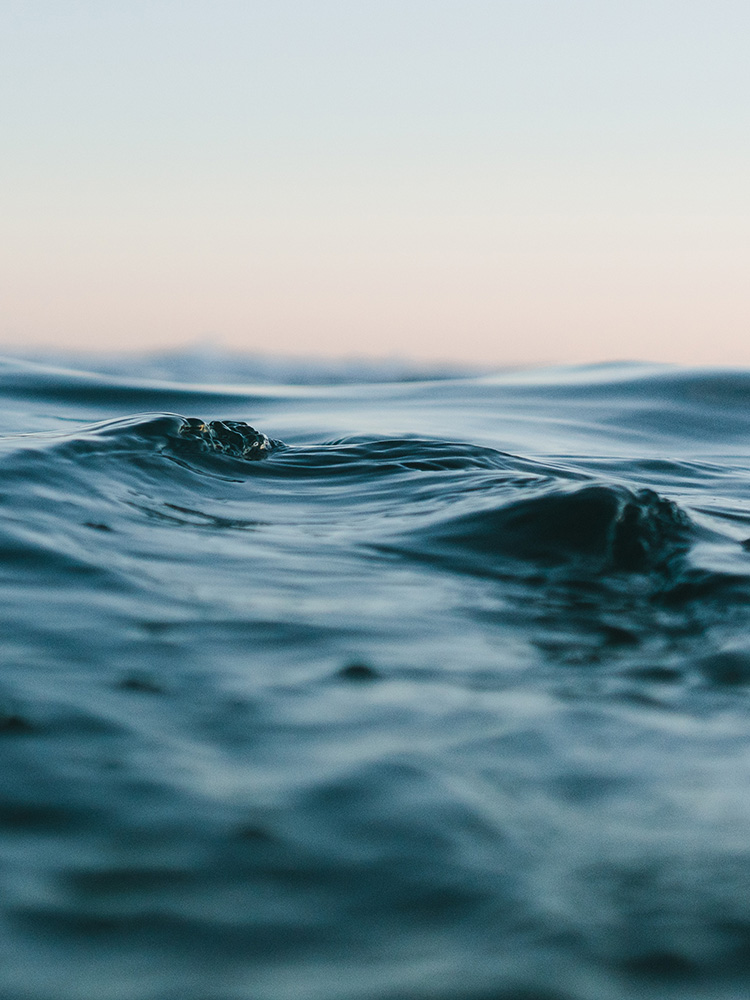A shrinking feeling.
Text: Andreas Grote
With rising sea levels, island and coastal states are losing ever more of their maritime zones. Pacific islands are therefore demanding new rules on drawing boundaries at sea.
Due to climate change, sea levels have been rising continuously since the beginning of the 20th century. According to the Intergovernmental Panel on Climate Change (IPCC), the level had risen by a total of 15 centimeters at the turn of the millennium. The IPCC predicts a further rise of between 76 and 110 centimeters over the next 80 years. Most of that change is down to the melting of glaciers and ice sheets. Another cause of rising sea levels is the fact that sea water expands as temperatures increase.
Low-lying countries such as the Maldives, the Bahamas, Indonesia, the Philippines and the Seychelles are not only concerned about a loss of land territory; they are worried their countries might disappear from the map entirely. “Many states also stand to lose valuable maritime zones,” says Anna Petrig, Chair of International Law and Public Law at the University of Basel. So-called baselines are the zero-mark to measure the different maritime zones and are determined by the low-water line along the coast. Starting from the baseline and extending 200 nautical miles out to sea lies the exclusive economic zone in which the coastal state holds the exclusive right to fish and extract valuable resources from the ocean floor. Beyond that are the “high seas,” which are open to all states for navigation and other uses.
Loss of maritime areas.
When rising sea levels alter the coastal configuration of a state or lead to the disappearance of islands off the coast, baselines move landwards or even disappear completely, with the consequence that coastal states lose maritime areas. According to the United Nations Convention on the Law of the Sea, affected states must constantly update these changing baselines in the sea maps to legally document where their waters end and the high seas begin. This procedure is intended to prevent disputes over fishing rights and valuable resources.
But the loss of maritime areas threatens the economic livelihood of these states. Few of them can afford protecting their coasts with dams or landfills. Since the Convention on the Law of the Sea, which was adopted in the 1980s, does not account for climate-related changes to sea levels, ever more coastal states are adopting creative solutions instead. Eighteen Pacific island states have officially declared that they will not update their baselines in the future, and more will likely follow their lead. “They are freezing their baselines at their current positions,” explains Anna Petrig. As a legal expert, she finds their actions understandable, even though the law of the sea stipulates that baselines be continuously adjusted to natural conditions – conditions that had remained relatively stable over millennia. Today, however, coastal geography is changing at an unprecedented rate.
Freezing baselines.
“It remains to be seen whether other states will regard the practice of freezing baselines as fair and whether states of the Global North will follow in the footsteps of the Pacific islands.” Petrig surmises that this approach could eventually become customary international law and replace the current rule of the Convention on the Law of the Sea.
At present, it is not clear how the legal landscape will evolve. “It's important to clarify the law of the sea in this regard and maybe to adjust it. Any ambiguity surrounding the definition of maritime boundaries has significant potential to ignite conflicts between states.” According to Petrig, having binding and permanent sea borders, even in times of sea level rise and rapidly shifting coastal geography, is a prerequisite for a peaceful and stable maritime order. But exactly how that will happen remains unclear.
More articles in this issue of UNI NOVA (November 2023).

